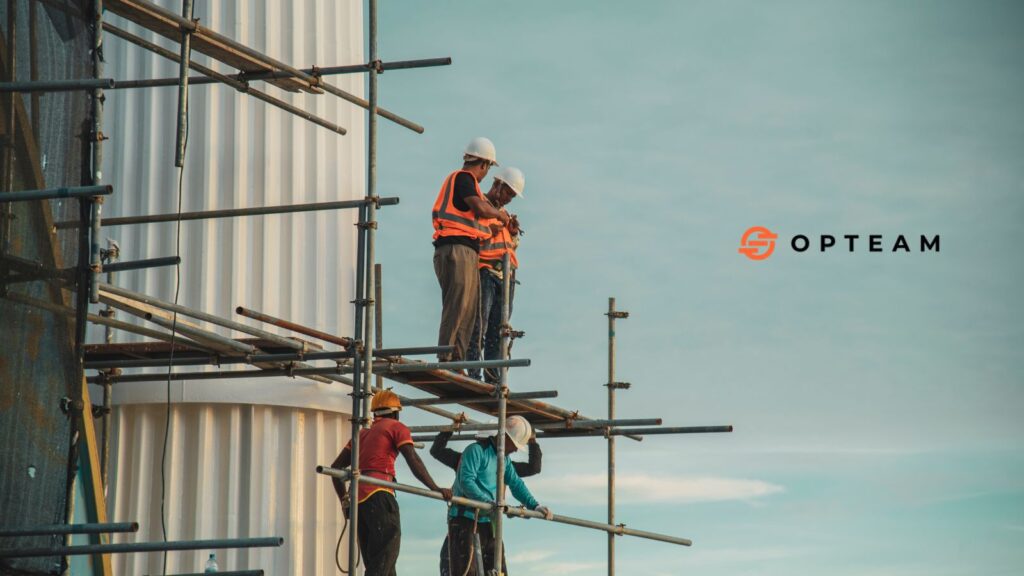Construction Management Vs Project Management: Key Differences

Are you losing sleep over project delays, cost overruns, or miscommunications on the job site? The construction industry is full of challenges, and the confusion between construction management and project management could be making things worse. It’s easy to blur the lines, but this mix-up might be dragging your projects down. Imagine a critical task slipping through the cracks because roles weren’t clear—or worse, your project going over budget because of misunderstood responsibilities. The stress of managing construction projects is already high, so why add more pressure by not knowing who’s truly in charge of what? This lack of clarity can lead to costly mistakes, missed deadlines, and a whole lot of frustration. Before your next project hits a roadblock, let’s break down the key differences between construction management and project management. Understanding these distinctions could be the game-changer you need to keep your projects on track and your stress levels in check. What is construction management? Construction management is a professional service that involves the overall planning, coordination, and control of a construction project from beginning to end. It encompasses a broad range of activities that are aimed at ensuring the successful delivery of a project, whether it’s a residential building, a commercial complex, or a large infrastructure project. Unlike traditional construction roles that might focus on specific aspects like design or labor, construction management integrates all elements of the construction process, bringing together various disciplines to work towards a common goal. At its core, construction management is about translating a project’s vision into reality. It involves a strategic approach to managing the entire construction process, from initial concept and design to the final touches. What is project management? Project management is a structured approach to planning, executing, and completing projects across various industries, including construction, IT, finance, and more. It involves applying knowledge, skills, tools, and techniques to meet specific project goals and deliverables within defined constraints like scope, time, cost, and quality. Project management is not confined to a particular sector or type of work; instead, it’s a versatile framework used to guide projects from conception through to completion, ensuring that the project meets its objectives and satisfies stakeholders. At its essence, project management is about turning ideas into actionable plans and ensuring those plans are carried out effectively. It provides a roadmap for managing resources, time, and risk, while aligning team efforts towards common goals. Project management methodologies, such as Agile, Waterfall, or Lean, offer structured ways to approach different types of projects, making it adaptable to diverse project requirements. Construction Management Vs Project Management Responsibilities When comparing construction management and project management within the construction industry, their responsibilities, though closely related, cater to different aspects of the project lifecycle. Construction management is deeply rooted in the hands-on, on-site execution of the project. It focuses on the day-to-day operations of the construction phase, including managing the construction crew, overseeing subcontractors, and ensuring that the work is carried out according to the design specifications and safety standards. Construction managers are responsible for the direct control of the construction activities, making real-time decisions to address site issues and adjust schedules as needed to keep the project on track. On the other hand, project management in construction is a broader discipline that encompasses the entire project from inception to completion. A project manager’s responsibilities start earlier and extend further, involving the initial planning stages, defining the project scope, setting objectives, and managing overall project timelines and budgets. They coordinate with all stakeholders, including clients, architects, engineers, and the construction management team, to ensure that the project aligns with the agreed-upon goals and constraints. Project managers are also tasked with risk management, quality assurance, and maintaining communication among all parties to ensure that the project stays aligned with the client’s vision. While construction managers focus on the technical and operational aspects on-site, project managers take a more strategic role, overseeing the big picture to ensure that all elements of the project fit together smoothly. Decision-Making Authority In construction projects, decision-making authority differs significantly between construction management and project management. Construction managers have authority over on-site decisions related to daily operations, such as resource allocation, work sequencing, and immediate problem-solving. They make real-time decisions that directly impact the construction process, focusing on keeping the project on schedule and ensuring quality and safety standards. Project managers, however, have a broader decision-making scope that spans the entire project lifecycle. They make strategic decisions about project direction, scope adjustments, major budget allocations, and overall timelines. While they do consider on-site inputs from construction managers, project managers are primarily responsible for high-level decisions that align the project with its overarching goals, stakeholder expectations, and long-term objectives. Communication and Coordination In construction, construction managers focus on on-site communication, coordinating with subcontractors and workers to keep daily operations running smoothly. They handle immediate on-site issues and ensure that tasks are clearly understood and executed. Project managers, however, oversee broader communication, liaising with all stakeholders, including clients, architects, and engineers. They coordinate across different teams to align project phases and ensure everyone is on the same page regarding project goals, progress, and any changes needed. Other areas Aspect Construction Management Project Management Scope of Work Focuses on on-site execution and operational details. Manages the overall project lifecycle and strategic planning. Risk Management Deals with immediate, on-site risks and issues. Manages overall project risks and strategic adjustments. Budget Management Oversees on-site costs and resource management. Handles overall project budgeting and financial planning. Quality Control Ensures construction work meets design and safety standards. Assures that project goals and quality standards are met. Time Management and Scheduling Manages daily schedules and on-site timelines. Oversees overall project timelines and major milestones. Resource Management Manages on-site labor, equipment, and materials. Allocates and monitors resources across the entire project. Compliance and Regulations Ensures adherence to site-specific safety and building codes. Ensures compliance with overall project regulations and standards. Tools and Technology Utilizes tools specific to construction operations. Uses project management software and methodologies.
Performance Measurement Baseline: How to Plan it?

Ever wondered how to keep a project on track from start to finish? That’s where the Performance Measurement Baseline (PMB) comes in. A PMB is like the project’s GPS, guiding you with a solid plan for scope, schedule, and cost. It’s crucial for staying on track and making sure your project meets its goals. In this article, I’ll break down what a PMB is and why it’s essential. By the end, you’ll understand how to set up a PMB and use it to keep your projects on course. The Concept of Performance Measurement Baseline Performance measurement in project management has come a long way. Before tools and software, tracking progress was manual and often inaccurate. The concept of the PMB evolved to bring consistency and reliability to project management. Components of PMB A PMB has three main components: 1- Scope Baseline: Defines what’s included in the project and helps avoiding scope creep. 2- Schedule Baseline: Outlines the project timeline & keeps the project on schedule. 3- Cost Baseline: Estimates the budget & tracks spending against the plan. Relationship with Project Plan Think of the PMB as the backbone of your project plan. It integrates with the overall project plan, ensuring everything aligns with the project’s goals. This alignment helps in making informed decisions and controlling the project effectively. Setting Up a Performance Measurement Baseline Initial Planning Start by identifying your project objectives and deliverables. Set clear, measurable criteria for performance. Ask yourself: Developing the Baselines Scope Baseline: Create a Work Breakdown Structure (WBS) & clearly define all the tasks and deliverables. Schedule Baseline: Develop a detailed project schedule & use Gantt charts or project management software to map out the timeline. Cost Baseline: Estimate project costs accurately & allocate budget to each task and phase. Tools and Techniques Use project management software like MS Project, Primavera or Opteam. These tools help in setting up and maintaining baselines. Analytical techniques, like Earned Value Management (EVM), are also handy for tracking performance. Benefits of a Performance Measurement Baseline Enhanced Project Control A PMB allows you to monitor and track project progress. You can identify variances early and take corrective actions. Improved Communication With a PMB, communication among stakeholders becomes clear and effective. It provides a common reference point for all performance-related discussions. Risk Management A PMB helps in the early identification of potential risks. You can proactively manage and mitigate these risks, ensuring smoother project execution. Challenges in Establishing and Maintaining a PMB Common Obstacles Setting up a PMB isn’t always smooth sailing. Some common challenges include: Strategies to Overcome Challenges Here’s how to tackle these obstacles: Future Trends in Performance Measurement Baseline Conclusion A Performance Measurement Baseline is essential for successful project management. It enhances control, improves communication, and helps manage risks. Adopting a PMB can significantly improve your project outcomes. Continuously refine your PMB processes for better results. References Books and Articles Online Resources FAQs Q: What is a Performance Measurement Baseline?A: It’s a plan for scope, schedule, and cost used to measure project performance. Q: Why is a PMB important?A: It helps in tracking progress, managing risks, and ensuring the project stays on track. Q: How do you set up a PMB?A: Identify project objectives, develop detailed baselines for scope, schedule, and cost, and use project management tools. Q: What challenges might I face with a PMB?A: Common challenges include resistance to change, inaccurate estimates, and lack of stakeholder engagement. Use these tips and insights to leverage your Performance Measurement Baseline for better project management.
SWAG Meaning in Construction: From A to Z

In the construction industry, the acronym SWAG stands for “Scientific Wild-Ass Guess.” It is a term used to describe an educated guess based on experience, intuition, and available data when precise information is lacking. While it may sound informal, a SWAG is often employed during the early stages of a project when there is insufficient detailed information to make accurate calculations. This approach allows project managers and engineers to estimate costs, timelines, and resource requirements with a reasonable degree of confidence, helping to set initial expectations and guide decision-making. SWAGs play a crucial role in the planning and budgeting phases of construction projects. When detailed plans and specifications are not yet available, project stakeholders rely on SWAGs to create preliminary budgets and schedules. These estimates are typically refined as more information becomes available and as the project progresses. By using a SWAG, project teams can move forward with a project even when faced with uncertainties, ensuring that progress is not stalled due to a lack of detailed data. Practical Applications 1. Preliminary Cost Estimation 2. Project Scheduling 3. Resource Allocation 4. Risk Management 5. Client Communication 6. Innovation and Problem-Solving How is the Swag Estimate Determined? The determination of a SWAG (Scientific Wild-Ass Guess) estimate involves a blend of intuition, experience, and limited available data. While it may sound informal, the SWAG estimate is a practical tool used in project management when precise data is unavailable. Initially, project managers leverage their past experiences and industry knowledge to make an educated guess about the project’s scope, timeline, and costs. This subjective approach helps in setting preliminary expectations and identifying potential challenges. Next, this initial guess is refined using any available data, however sparse it might be. Historical project data, similar project benchmarks, and expert consultations play a crucial role in this phase. Project managers analyze past projects of similar nature to draw parallels and make more informed estimations. They also consider the unique aspects of the current project that might affect the estimate, such as new technologies, differing team dynamics, or environmental factors. This process helps in transforming the SWAG from a purely intuitive guess into a more structured and reliable estimate. Finally, the SWAG estimate undergoes validation and adjustment through stakeholder review and iterative feedback. Engaging team members and stakeholders in the estimation process ensures that diverse perspectives and expertise are considered. Components Component Description Initial Intuition Leveraging past experiences and industry knowledge to make an educated guess about the project’s scope, timeline, and costs. Available Data Analysis Refining the initial guess using any available data, such as historical project data, similar project benchmarks, and expert consultations. Unique Project Factors Considering unique aspects of the current project that might affect the estimate, like new technologies, team dynamics, or environmental factors. Stakeholder Review Engaging team members and stakeholders to provide diverse perspectives and expertise, ensuring the estimate is comprehensive and well-rounded. Iterative Feedback Regularly reviewing and updating the estimate based on new information or changes in project scope to maintain accuracy and relevance. Historical Comparisons Analyzing past projects of similar nature to draw parallels and make more informed estimations. Expert Consultation Consulting with subject matter experts to gain insights and refine the initial guess with more precise and knowledgeable input. Preliminary Framework Creating a preliminary framework that provides a starting point for project planning and can be adjusted as more data becomes available. This table outlines the key components involved in developing a SWAG estimate. Pros & Cons While it provides a quick and intuitive starting point, it’s important to consider its advantages and disadvantages. The table below outlines the pros and cons of using a SWAG estimate. Pros Cons Quick to generate Lack of precision Leverages experience and intuition High degree of uncertainty Useful when detailed data is unavailable May lead to unrealistic expectations Helps initiate preliminary planning Relies heavily on subjective judgment Can be refined as more data becomes available Potential for significant adjustments later
8 Construction Management Procurement Methods

Unlocking the potential of your construction project starts with choosing the right procurement method. The right strategy can enhance efficiency, reduce costs, and ensure high-quality outcomes. Whether you are a contractor, project manager, or client, understanding the various procurement methods is key to achieving your goals. This guide, “Construction Management Procurement Methods 101,” will illuminate the best approaches, showcasing their benefits and practical applications. Dive in to empower your projects with the knowledge to make smart, informed decisions and lead your construction endeavors to success. 1- Traditional Procurement Traditional procurement, often referred to as the Design-Bid-Build (DBB) method, is one of the most common and established approaches in the construction industry. This method involves a sequential process where the design phase is completed before the construction phase begins. Initially, architects and engineers develop detailed project designs, which are then put out to tender. Contractors bid on the project based on these completed designs, and the contract is awarded to the lowest responsible bidder. This clear separation of design and construction responsibilities ensures a well-defined project scope and cost before construction commences. One of the primary advantages of traditional procurement is its straightforward and structured approach, providing a clear framework for project delivery. This method allows for competitive bidding, which can potentially lower construction costs. Additionally, the defined roles and responsibilities help minimize conflicts and misunderstandings among project stakeholders. However, the sequential nature of the process can lead to longer project timelines, as construction cannot begin until the design phase is fully complete. Moreover, any changes or unforeseen issues that arise during construction can result in costly delays and disputes, as they often require modifications to the original design. Despite these challenges, traditional procurement remains a popular choice for many projects due to its simplicity and clarity in contractual arrangements. 2- Design and Build Design and Build is a streamlined procurement method that integrates both the design and construction phases under a single contract. In this approach, the client engages a single entity, typically a contractor, who takes responsibility for both designing and building the project. This integrated method fosters enhanced collaboration between designers and builders from the project’s inception, leading to more efficient and cohesive project execution. By consolidating these responsibilities, the Design and Build approach often results in faster project completion and potentially lower overall costs, as the potential for design-related changes and disputes is minimized. One of the key benefits of the Design and Build method is its ability to accelerate project timelines. With design and construction occurring concurrently, rather than sequentially, projects can move from concept to completion more swiftly. This method also promotes innovation and flexibility, as designers and builders work closely together to find optimal solutions throughout the project lifecycle. Additionally, having a single point of accountability simplifies communication and reduces the administrative burden for the client. However, this approach requires the client to place significant trust in the selected contractor, as the quality of both design and construction hinges on their expertise and reliability. 3- Construction Management at Risk (CMAR) Construction Management at Risk (CMAR) is a collaborative procurement method where the construction manager is engaged early in the project and takes on a dual role of consultant during the design phase and general contractor during construction. In this approach, the construction manager provides valuable input during the design process, such as cost estimation, scheduling, and constructability reviews, to ensure the project is well-planned and viable. One of the defining features of CMAR is the establishment of a Guaranteed Maximum Price (GMP), which sets a cap on the project’s cost, providing the client with financial assurance and minimizing the risk of budget overruns. 4- Construction Management Multi-Prime (CMMP) Construction Management Multi-Prime (CMMP) is a procurement method where the owner contracts directly with multiple prime contractors, each responsible for different portions of the work. Unlike traditional procurement methods where a single general contractor oversees the entire project, CMMP involves the owner playing a more active role in managing and coordinating the various contractors. This approach allows for more direct control over the project and can lead to cost savings by eliminating the general contractor’s markup on subcontractor work. One of the primary benefits of CMMP is the increased level of control it provides to the owner. 5- Integrated Project Delivery (IPD) Integrated Project Delivery (IPD) is an innovative procurement method that emphasizes collaboration, efficiency, and shared responsibility among all project stakeholders. In this approach, key parties such as the owner, architects, engineers, and contractors enter into a single, multiparty agreement. This agreement fosters a highly cooperative environment where all participants share both the risks and rewards associated with the project’s outcome. The primary goal of IPD is to leverage the collective expertise of all stakeholders to deliver a project that meets or exceeds expectations in terms of quality, cost, and schedule. 6- Public-Private Partnership (PPP) Public-Private Partnership (PPP) is a procurement method where the public sector collaborates with private entities to finance, design, construct, and operate infrastructure projects. This model leverages the strengths and resources of both sectors, aiming to deliver projects that might otherwise be unattainable due to budget constraints or technical challenges. In a PPP arrangement, the private partner typically invests capital and expertise, while the public sector provides oversight and ensures the project aligns with public interests. This partnership often spans the entire project lifecycle, from conception to operation, providing a holistic approach to infrastructure development. 7- Job Order Contracting (JOC) Job Order Contracting (JOC) is a streamlined procurement method designed for managing and executing a series of small to medium-sized construction projects efficiently. Under a JOC framework, the owner enters into a long-term contract with a contractor, which includes predefined unit prices for various construction tasks. This arrangement eliminates the need for multiple bidding processes for each project, significantly reducing administrative overhead and accelerating project delivery. JOC is particularly well-suited for repetitive work, maintenance, and repair projects, where speed and flexibility are crucial. 8- EPC (Engineering, Procurement, and Construction) The
What Is Cost Data In Construction?

In short: In the dynamic world of construction, managing costs efficiently is crucial for the success of any project. As the complexity and scale of construction projects increase, so does the need for accurate and comprehensive cost data. But what exactly is cost data in construction? Understanding this essential aspect is key to ensuring projects stay within budget, meet financial goals, and maintain profitability. In this article, we will delve into the fundamentals of cost data in construction, exploring its significance, components, and how it impacts project management and decision-making processes. Whether you’re a seasoned professional or new to the industry, gaining insights into cost data can enhance your ability to navigate the financial intricacies of construction projects. What Is Cost Data In Construction? Cost data in construction refers to the detailed information related to the expenses incurred during the planning, execution, and completion of construction projects. This data encompasses a wide range of costs, including materials, labor, equipment, subcontractor services, and overheads. The primary goal of collecting and analyzing cost data is to ensure projects are completed within budget while maintaining the desired quality and scope. Key Components of Cost Data Key Components of Cost Data in Construction Component Description Direct Costs Costs directly attributable to specific construction activities. Materials Cost of raw materials such as concrete, steel, lumber, and other construction supplies. Labor Wages and benefits paid to construction workers, including specialized trades and general labor. Equipment Expenses for renting or purchasing construction equipment and machinery. Indirect Costs General expenses not directly tied to specific construction activities. Overheads General expenses such as office rent, utilities, and administrative salaries. Insurance and Permits Costs for construction insurance, permits, and regulatory compliance. Subcontractor Costs Payments made to subcontractors for specialized tasks like electrical work, plumbing, or roofing. Contingency Costs Budgeted reserve for unexpected expenses or cost overruns. Soft Costs Expenses not directly related to physical construction, such as architectural and engineering fees, legal services, and project management costs. This table succinctly captures the various components that make up cost data in construction, providing a clear overview of each category’s contribution to the overall financial management of a project. Leverage Opteam Construction Planning and Scheduling Software for Cost Data of Your Projects Opteam’s comprehensive suite of features is designed to integrate seamlessly with project workflows, ensuring precise cost tracking and control throughout the project lifecycle. Here’s how Opteam can be utilized to optimize cost data management for your construction projects: Key Features and Benefits of Opteam for Cost Data Management Read more:
FFC Meaning in Construction: What You Need to Know

In construction, FFC stands for “Forecast Final Cost.” This term is used to estimate the total expected cost of a project upon its completion. It includes all anticipated expenses, such as labor, materials, equipment, and any other costs that might arise throughout the project lifecycle. The FFC is crucial for budget management, allowing project managers to predict and control costs, identify potential overruns, and make informed decisions to ensure the project stays within financial constraints. Importance of FFC in construction project management 1. Budget Management 2. Financial Planning and Resource Allocation 3. Risk Management 4. Decision-Making 5. Performance Measurement 6. Contract Management Challenges in Estimating FFC Estimating the Forecast Final Cost (FFC) in construction projects presents numerous challenges, primarily due to the inherent uncertainties and complexities of the industry. One of the most significant challenges is the variability in material costs. Prices for construction materials can fluctuate due to market demand, supply chain disruptions, or economic factors, making it difficult to predict future expenses accurately. Additionally, labor costs can vary based on local market conditions, availability of skilled workers, and regulatory changes. These fluctuations necessitate frequent updates and adjustments to the FFC, complicating the estimation process. Another challenge in estimating FFC is the impact of unforeseen events and risks. Construction projects are often subject to unexpected delays and disruptions, such as adverse weather conditions, site accidents, or changes in project scope. These events can lead to additional costs that were not accounted for in the initial FFC. Moreover, the discovery of site conditions, such as hidden structural issues or contamination, can require significant changes to the project plan and budget. Effective risk management strategies and contingency planning are essential, but they add layers of complexity to the FFC estimation. Lastly, the integration and accuracy of data play a crucial role in FFC estimation. Construction projects involve numerous stakeholders, including architects, engineers, contractors, and suppliers, each contributing data that affects the overall cost forecast. Ensuring that all parties provide accurate and timely information is a challenge, as discrepancies or delays in data can lead to incorrect FFC estimates. Role of Technology in FFC Technology plays a pivotal role in enhancing the accuracy and efficiency of Forecast Final Cost (FFC) calculations in construction project management. The integration of construction management software provides tools and features that streamline data collection, analysis, and reporting, significantly improving the precision of cost estimates. These platforms consolidate various aspects of project management, from budgeting and scheduling to resource allocation and risk management, into a single interface, enabling project managers to make well-informed decisions quickly and effectively. How Construction Management Software Aids in Accurate FFC Calculations Construction management software aids in accurate FFC calculations by providing real-time data and analytics, automating complex calculations, and facilitating better communication among stakeholders. These tools allow for continuous monitoring of project expenses against the budget, ensuring that any variances are identified and addressed promptly. Advanced software can integrate with other systems, such as accounting and procurement platforms, to provide a comprehensive view of the project’s financial status. Examples of Software and Their Features Several construction management software solutions are available, each offering unique features to aid in FFC calculations. For example, Opteam is an AI-powered construction project management software that provides robust tools for cost forecasting and control. Opteam includes features such as: Other popular software options include Procore, which offers comprehensive project management solutions with a strong emphasis on cost control, and Buildertrend, which provides budgeting and forecasting tools tailored for residential and commercial construction projects.
Earned Value Management in Construction: Your Full Guide

Imagine you’re in the middle of a large construction project, and despite your best efforts, things start to go bad. Deadlines are missed, costs spiral out of control, and you’re left scrambling to make sense of the chaos. This scenario is a nightmare for any project manager, leading to stress, confusion, and ultimately, failure to meet client expectations. The frustration of watching a meticulously planned project fall apart is all too common in the construction industry. The pressure of balancing time, cost, and scope can feel overwhelming, especially when traditional project management methods fail to provide clear insights into project performance. Without a reliable system to measure progress and predict outcomes, the risk of project overruns becomes a constant shadow looming over every decision. Fortunately, there is a game-changing methodology that can transform the way you manage your projects: Earned Value Management (EVM). EVM integrates project scope, schedule, and cost parameters to give you a comprehensive view of your project’s health. With EVM, you can quickly identify variances, forecast future performance, and make informed decisions to keep your project on track. In this guide, we’ll walk you through the fundamentals of EVM, its benefits, and how you can implement it in your construction projects to ensure timely and cost-effective completion. Say goodbye to project management nightmares and hello to a streamlined, efficient approach that guarantees success. The Concept of Earned Value Management in Construction Earned Value Management (EVM) is a project management technique used to assess project performance and progress in an objective manner. In the context of construction, EVM integrates project scope, schedule, and cost to provide a comprehensive view of project health and efficiency. Key Components of EVM Earned Value Formula The basic Earned Value (EV) formula in construction is: EV = Percent Complete × Planned Value (PV) Where: For example, if the planned budget for a task is $100,000 and it is 40% complete, then: EV=40%×100,000=40,000 Benefits of EVM in Construction Earned Value Management (EVM) revolutionizes construction project management by providing a clear and objective way to measure progress and performance. With EVM, construction managers can accurately compare planned work against completed work, ensuring projects stay on track and within budget. This method reduces reliance on subjective assessments, offering a reliable snapshot of project health at any given moment. One of the standout benefits of EVM is its ability to serve as an early warning system. By regularly comparing planned and actual progress, EVM can highlight potential issues before they become critical. This proactive approach allows managers to implement corrective actions swiftly, minimizing delays and cost overruns. The ability to foresee and mitigate risks early enhances overall project efficiency and success. Moreover, EVM fosters better communication and transparency with stakeholders. It translates complex project data into easy-to-understand metrics, making it simpler to convey project status to clients, investors, and team members. This clarity builds trust and ensures everyone is on the same page, ultimately leading to smoother project execution and improved stakeholder satisfaction. Importance of earned value management in construction Earned Value Management (EVM) is crucial in construction because it provides a clear, objective way to measure project performance against the planned schedule and budget. Unlike traditional tracking methods that only compare actual costs to planned costs, EVM integrates scope, time, and cost into a single system. This allows project managers to understand not just how much money has been spent, but also how much value has actually been achieved for that spending. By doing so, EVM helps identify whether a project is ahead or behind schedule, and over or under budget, with far greater accuracy. The importance of EVM also lies in its ability to give early warning signals. Construction projects are complex and prone to risks, delays, and cost escalations. EVM metrics such as Cost Performance Index (CPI) and Schedule Performance Index (SPI) highlight variances at an early stage, enabling managers to take corrective action before problems grow. This makes EVM a powerful decision-making tool, helping stakeholders maintain control over time, cost, and scope while ensuring accountability and transparency across all phases of the project. Implementation Steps In Brief .. Earned Value Management is a powerful tool in construction project management, offering a structured approach to measure and control project performance. By integrating cost, schedule, and scope, EVM helps project managers deliver projects on time and within budget, ultimately leading to more successful project outcomes.
What is Concurrent Delay in Construction?

On average, 72% of construction projects experience delays, with the original contracted duration increasing by 38%. Among these delays, concurrent delays present a particularly complex challenge. They disrupt the scheduled flow of construction projects, lowering the expected profits, and often leading to complicated processes involving construction litigation. Knowing this is vital for those handling disputes and trying to keep a project on track. Documenting Delay Events In construction projects, delays do not only happen due to events by one party (i.e., owner or contractor) but also concurrently due to events by both parties. Concurrent delays occur when multiple setbacks happen simultaneously. These concurrent delays make it difficult to analyze the allocation for delay responsibility and the consequent liability, compensation, and project extension decisions. Look at the demonstration example below of a small 8-day plan that experienced execution delay events by both parties at different times to different activities, as shown. Read more: Construction Progress Tracking: Why, What & How? The result is a 3-day project delay, as shown in Fig. 1. Even for this tiny, simplified example, it is not easy to determine the portion of the 3-day project delay is attributed to each party (owner and contractor). This demonstrates the importance of properly documenting all progress events accurately and timely on the day they occurred, along with recording the related reasons and any support documents such as communication letters, photos, etc. In any construction project, there can be many reasons for each party to cause work delay event. A summary of some key reasons is shown in Fig. 2. Typically, owner-related causes justify time extension and money compensation to the contractor. Contractor causes, on the other hand, are neither compensable nor entitles the contractor to time extension. When a third party-related event (extreme weather, strike, or other unexpected events) occurs, it usually entitles the contractor to time extension but not monetary compensation. Also, when it is proven that concurrent events simultaneously caused a project delay, shared allocation can be determined. These, however, are general rules and complex situations may require some negotiations to resolve any disputes. A brief discussion of top ten causes is as follows: Owner related causes: Contractor related causes: Read more: What Is Fast-Tracking in Construction? All What You Need to Know Third-party related causes: Analysis and Resolution: How Opteam can help? Analyzing project delays requires a systematic approach to identify the root causes and the sequence of events leading to the delays. The accuracy of the analysis depends on the accuracy by which progress events are recorded, including daily reports, meeting minutes, and correspondences. A critical aspect of resolving disputes is effective communication among all stakeholders. Open lines of communication can help in identifying potential delays early and addressing them before they escalate. Establishing a protocol for documenting and reporting delays ensures that all parties are aware of the issues as they arise. This transparency not only aids in the timely resolution of delays but also fosters a collaborative environment where stakeholders can work together to find solutions. Utilizing Opteam’s add-on software enhances the accuracy of both progress recording and delay analysis. Upon recording the delay events on the school, Opteam’s analysis tools accurately assess both delays and accelerations in cases of two-party events, three-party events, and multiple baseline updates. This allows for a clearer visualization of activities and impacts. Opteam’s analysis methods are discussed in a separate article. However, the main concept is to apply Venn analytics to determine the delay responsibility, as shown in Fig. 3. Concurrent Delay Analysis Methods Concurrent delay analysis can be a bit tricky, but let’s keep it super simple. Imagine two kids running a race, and both stop at the same time because one trips over a rock and the other stops to tie their shoe. Who’s to blame for the delay? That’s what concurrent delay analysis is all about—figuring out how to split the responsibility when more than one thing causes a project to slow down. Here are the basic methods to understand it: In short, it’s all about spotting what caused the slowdowns and figuring out who’s responsible for what. Easy, right? 😄 Concurrent Delay Construction Example Alright, let’s break it down with an example that’s easy to picture: The Scenario: You’re building a house. The contractor was supposed to install the roof, and the homeowner was supposed to finalize the window designs by a certain date. What Happened: The Impact: Both delays happened during the same 2-week period, and they pushed the project timeline back. This is concurrent delay—when two delays overlap and cause issues. Who’s Responsible? This is why analyzing concurrent delays is such a big deal in construction projects—it’s about fairness! 😊 Conclusion Your skill in analyzing complex delay situations is key to keeping projects on track. It also helps avoid complex legal disputes that can emerge. Detailed progress documentation and delay analysis tools such as Opteam’s add-on software are essential to carefully map out the intertwined schedules and legal issues in construction contracts. The impact of concurrent delays on construction litigation is significant. Legal considerations play a significant role in the resolution of delays. It is essential to have a clear understanding of the contract terms related to delays and extensions of time. Consulting with legal experts who specialize in construction law can provide valuable insights into liability and help in drafting contract provisions that address potential delays. Additionally, investing in training for project managers and staff on best practices for delay analysis and resolution can improve their ability to manage and mitigate delays effectively, ultimately keeping projects on track.
Construction Cost Management: 20 Tips For Maximum Profitability

In the construction industry, inefficiencies can be drainful, and many projects suffer cost overruns or get delayed, with only 8.5% of projects completed on time and on budget (source). Cost tracking acts as a vital tool for companies’ profitability. Furthermore, the accuracy and diligence in construction cost management are essential. Accurate cost tracking is the backbone of maximizing profitability, optimizing resources, and leading your project to victorious completion. Construction Cost Management: Why Is It Important? In construction, cost tracking allows managers to monitor expenses in real-time. By meticulously tracking costs associated with materials, labor, and equipment, construction companies can identify discrepancies between projected and actual expenditures. This real-time insight enables quick adjustments to be made, preventing small issues from escalating into major financial overruns. Effective cost tracking ensures that funds are directed towards the most critical aspects of the project, thus enhancing overall profitability. Additionally, with detailed cost data, construction managers can develop more precise budget for future projects, reducing the likelihood of unexpected expenses and delays. This proactive approach to financial management helps in negotiating better deals with suppliers and subcontractors, securing more favorable terms and prices. Challenges in Construction Cost Management Several challenges can cause inefficiencies in managing the cost of construction. They can be of two types: Challenges in accurately and practically estimate the budget of the work, before construction starts; and challenges in controlling the actual expenditures to avoid exceeding the budget, after construction starts. Below are some of the detailed challenges. Before Construction 1- Budget Overruns: Projects often exceed their initial budgets due to unforeseen costs, leading to financial strain. 2- Inaccurate Estimates: Not only the activities’ direct costs need to be accurately estimated based on practical productivity factors, but all indirect costs as well. 3- Omissions & Errors: The increasing complexity of modern projects makes errors and omissions very common in the preparation of estimates. 4- Insufficient time: The competitive bidding process can leave limited time for the preparation of detailed estimates. During Construction 1- Unexpected Site Conditions: Unanticipated conditions on-site can lead to additional costs for mitigation and adjustments. 2- Changes: Modifications to project scope can lead to significant cost increases and require budget adjustments. 3- Complex Supply Chains: Managing and coordinating multiple suppliers and subcontractors can result in cost variability. 4- Labor Cost Fluctuations: Variations in labor rates and availability can impact overall project costs. 5- Material Price Volatility: Fluctuating prices of construction materials can affect actual project costs. 6- Inefficient Cost Tracking Systems: Lack of real-time cost tracking tools can hinder timely decision-making and cost control. 20 Tips For Efficient Construction Cost Management Here are several tips to enhance cost management in construction, both before and during construction, as shown in the details below: Before Construction During Construction Mastering Management with Opteam From detailed scheduling to automated real-time updates, Opteam empowers you to stay on track and meet deadlines with ease. It’s a new software solution that integrates advanced planning capabilities with user-friendly progress tracking, making cost and time management simpler and more effective. Opteam isn’t just about scheduling and budgeting; it’s about fostering collaboration and communication across your entire project team. The platform ensures that everyone, from project managers to on-site workers, has access to the latest updates and information. With mobile-friendly features, team members can update progress and communicate changes in real-time, no matter where they are. This connectivity ensures that everyone is on the same page, reducing delays and preventing miscommunication. Conclusion In the complex world of construction, cost management stands out for ensuring projects are efficient. This crucial practice is the foundation for guiding projects to profitability. As the construction sector grows, refining cost management becomes key to staying competitive. The adoption of cost management tools can streamline construction workflows, making it easier to manage cost volatility. The journey of enhancing productivity with construction cost management is ongoing. Your commitment to enhancing team communication and cooperation is vital. It’s through adapting and applying innovative solutions that your projects will achieve their goals. This adaptation is crucial for not just survival but for flourishing in tomorrow’s competitive construction field.
Construction Progress Tracking: Why, What & How?

Efficiency may not be the first thought that springs to mind in the realm of construction. However, the success of your projects ultimately rests on the meticulous execution of construction progress tracking. Consider this: 59% of contractors still rely on manual processes to collect and track safety data when they simply can embrace effective methodologies and state-of-the-art progress monitoring solutions to significantly augment both operational effectiveness and financial outcomes. Navigating the intricate landscape of construction sites to document progress and optimize efficiency can seem daunting. Imagine a scenario where every minute and material in your construction endeavors is meticulously monitored, rendering delays a thing of the past. Such accomplishments are not mere fantasies but tangible possibilities achievable through meticulous planning and the utilization of construction software. Why to track? Whether you’re a contractor or subcontractor, evaluating if your efforts align with set objectives is paramount. Here are the key reasons for accurate progress tracking: 1- Status updates: accurately knowing how much work done enables accurate invoicing and if corrective actions need to be done. 2- Accelerating Project Completion: Beyond mere logging of hours, construction time and cost tracking serve as a catalyst for enhanced productivity, recovery planning and profitability. 3- Optimizing Resource Utilization: Effective allocation of resources, encompassing both workforce and materials, is instrumental in maintaining budgetary constraints without compromising quality. Leveraging project management tools facilitates this proud s, enabling your team to allocate labor and materials judiciously. 4- Boosting Profit Margins through Operational Efficiency: Efficient progress tracking holds the key to accurate invoicing and bolstering profitability, thereby meeting client expectations and ensuring project viability. What to track? Identifying what to track in construction projects is pivotal for ensuring comprehensive oversight and successful outcomes. 1. Activities percent complete: tracking the amount of completed work is the basic ingredient for success. 2. Progress Milestones: Tracking project milestones allows for a clear assessment of delivery dates. Monitoring milestone achievements facilitates proactive decision-making and timely adjustments to keep the project on course. 3. Costs: Vigilant tracking of cost helps prevent cost overruns and ensures adherence to financial constraints. 4. Workforce Productivity: Monitoring workforce productivity involves tracking labor hours, task completion rates, and overall efficiency. Assessing workforce productivity enables optimization of labor resources to maximize project efficiency. 5. Material Inventory: Efficient management of material inventory entails tracking the availability, usage, and speedy assessment of submittals. Maintaining accurate inventory records facilitates timely procurement, minimizes wastage, and ensures seamless project continuity. 6. Safety and Quality Compliance: Tracking safety and quality measures ensures adherence to regulatory standards and promotes a safe working environment. Monitoring safety incidents, implementing corrective actions, and conducting regular inspections are essential for mitigating risks and safeguarding personnel. How does technology help? Progress tracking is a time consuming process, both onsite and in the office, yet any delay in assessing project status make corrective actions like shooting in the dark. Currently, the construction industry is making strategic moves toward adopting advanced technologies. 53.7% of construction companies in 2021 report they have a process for testing and implementing new technologies (source). This shift isn’t just a passing trend; it’s essential for strategic improvement. Now, new solutions like Opteam are leading to greater accuracy, faster project completion, and increased efficiency. Such an add-on tool for project management software is central to your project success. It merges accurate effortless documentation, communications with comprehensive dahsboarding of planned versus actual status. This integration ensures smooth information flow and effective resource management. Adopting such technology is crucial for keeping pace in the rapidly advancing construction sector. The right project tracking software. Why Opteam? Selecting the appropriate construction project tracking software is a critical decision that can significantly impact project efficiency and success. With numerous options available in the market, navigating the selection process requires careful consideration of various factors. Here are the key factors that make Opteam’s solution unique: Simplicity and Mobile Accessibility Mobile accessibility enables real-time project tracking and collaboration. It takes only few seconds to enter data. Auto updates to P6 File No effort is needed to update Primavera P6 Files, saving a large number of hours. Reporting and Analytics Powerful reporting and analytics capabilities to ensure comprehensive insights into project performance and trends. Integration with Existing Systems Seamlessly integrates with your existing project management tools, accounting systems, and other relevant software applications. Scalability Opt for software that can accommodate the evolving needs of your construction projects, whether you’re managing small-scale endeavors or large-scale developments. Customization Capabilities Offers customizable features to align with the unique requirements of your construction projects. Navigating the intricate landscape of construction projects, especially with tight deadlines, demands precision and efficiency. From managing schedules to making rapid decisions, the challenges can be overwhelming. However, with the right tools in hand, these challenges become opportunities for streamlined operations and enhanced productivity. Harnessing the power of AI, OPTEAM revolutionizes the way projects are managed by offering automated solutions tailored to fast-paced environments. By intelligently selecting activities to fast-track and providing users with the flexibility to preset the level of acceleration, OPTEAM ensures that projects stay on course, even amidst demanding timelines. Conclusion The essence of success in the construction sector goes beyond developing a good plan. It lies in mastering execution, monitoring and keeping the construction process in sync with the plan. This is not just a rule to follow. It’s a game-changing strategy that boosts efficiency and output. Your dedication to innovation and using advanced software marks the beginning of a new chapter. This is where tracking goes beyond traditional methods, pushing the construction industry forward. It allows for growth similar to tech-savvy sectors, ensuring a future that is robust and sustainable for builders everywhere. Read more: